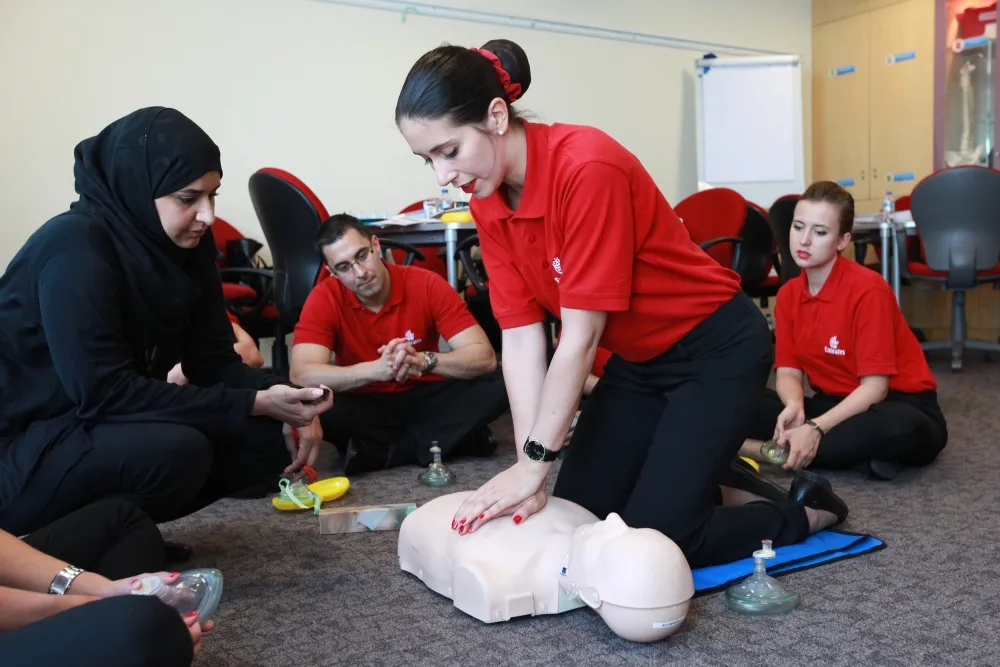
Emirates reveals the real cost of medical diversions for an airline.
Feb 07, 2017

Emirates has disclosed the significant financial implications of medical diversions for airlines, highlighting the unexpected costs associated with diverting flights for passenger health emergencies. These diversions can lead to increased operational expenses, including fuel, crew overtime, and airport fees. Furthermore, the airline must account for the impact on schedules and passenger experiences, which can affect overall brand reputation. By sharing these insights, Emirates aims to raise awareness about the challenges airlines face in managing in-flight medical emergencies and the importance of having robust contingency plans to mitigate such incidents.
Airlines operate under a complex web of logistics, and one critical aspect of this is the management of medical diversions. Emirates recently unveiled the "real cost" associated with these unexpected detours, shedding light on an often-overlooked area of airline operations. Understanding these costs is essential for industry stakeholders and travelers alike, as it can impact ticket prices and operational efficiency.
Understanding Medical Diversions
Medical diversions occur when an aircraft must change its flight path to accommodate a passenger experiencing a medical emergency. This can happen for various reasons, including serious health issues that require immediate medical attention. While airlines prioritize passenger safety, the consequences of these diversions can be significant.
The Financial Implications
Emirates has revealed that the financial repercussions of medical diversions are substantial. These costs can be broken down into several key components:
| Cost Component | Description |
|---|---|
| Fuel Costs | Detouring a flight can lead to increased fuel consumption, significantly raising operational expenses. |
| Landing Fees | Airports charge landing fees, which can vary widely based on the location and the duration of the stay. |
| Operational Delays | Delays caused by medical emergencies can lead to domino effects, disrupting schedules and leading to further costs. |
| Passenger Compensation | Airlines may need to compensate affected passengers for delays, missed connections, or accommodations. |
| Medical Assistance Costs | Providing medical assistance during a diversion often requires additional staff and resources, adding to the expense. |
The Total Cost of Medical Diversions
According to Emirates, the total cost of a medical diversion can range from several thousand to tens of thousands of dollars, depending on various factors such as the flight's distance from the nearest airport and the severity of the medical situation. This financial strain emphasizes the importance of proactive measures in managing passenger health.
Prevention and Management Strategies
To mitigate the costs associated with medical diversions, airlines, including Emirates, are adopting several strategies, including:
- Pre-Flight Health Assessments: Encouraging passengers to disclose medical conditions during the booking process can help airlines prepare and respond appropriately.
- Onboard Medical Equipment: Ensuring that aircraft are equipped with essential medical supplies and trained staff can help manage emergencies more effectively.
- Telemedicine Services: Utilizing telemedicine can allow in-flight medical professionals to consult with ground-based doctors, potentially reducing the need for diversions.
The Impact on Ticket Prices
The hidden costs of medical diversions contribute to overall operational expenses, which can indirectly influence ticket prices. As airlines manage these costs, they may adjust fares to maintain profitability while ensuring safety and comfort for all passengers. Travelers may notice fluctuations in ticket prices, particularly on routes with higher incidences of medical emergencies.
Conclusion
Emirates’ revelation regarding the "real cost" of medical diversions highlights an essential aspect of airline operations that often goes unnoticed by the traveling public. Understanding these costs can foster a greater appreciation for the complexities involved in maintaining safety and service quality in the airline industry. As airlines continue to innovate and implement preventive measures, the hope is to reduce the frequency and impact of medical diversions, ultimately leading to more efficient operations and potentially lower ticket prices for travelers.
In summary, while medical diversions are an unfortunate reality, the airline industry is making strides to address these challenges through careful planning and proactive measures. As travelers, being informed about these dynamics can lead to a better understanding of the costs associated with air travel and the importance of safety at 30,000 feet.
Related Articles

Explore Thailand: The Best Islands to Visit for Paradise, Adventure, and Relaxation

The Ultimate Guide to the Best Islands in Thailand for Your Next Getaway

Do babies need passports? How to get a passport for a newborn

How to get a U.S. passport fast: here’s how to expedite the process

What is Mobile Passport Control: 5 reasons why you should use it

SENTRI vs. Global Entry: A detailed guide

Do you need a passport to go to the Bahamas? Let’s find out

Do you need a passport to go to Mexico? A detailed guide

Do you need a passport to go to Canada? We got the answer

Do You Need a Passport for a Cruise: An Essential Travel Guide

Booster Seat Requirements: All the Rules to Follow in Your Rental Car

What Are the World’s Most Powerful Passports, and How Does Yours Rank?

How to Take a Passport Photo at Home: A Helpful Guide

You've got to have heart! Southwest's new livery

Your opinion: Should water be free on low cost carriers?

Young women bolder than guys as solo travellers
